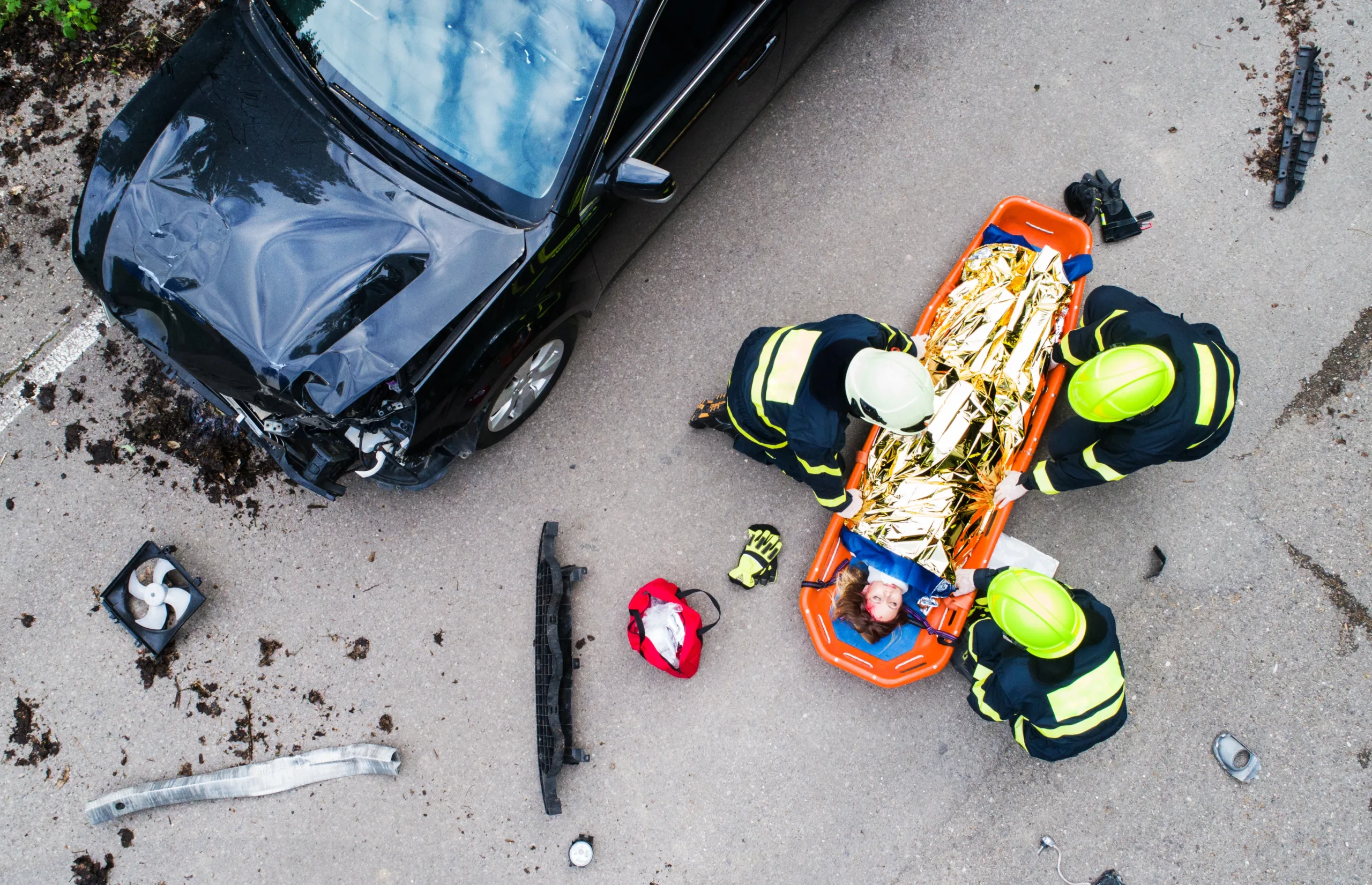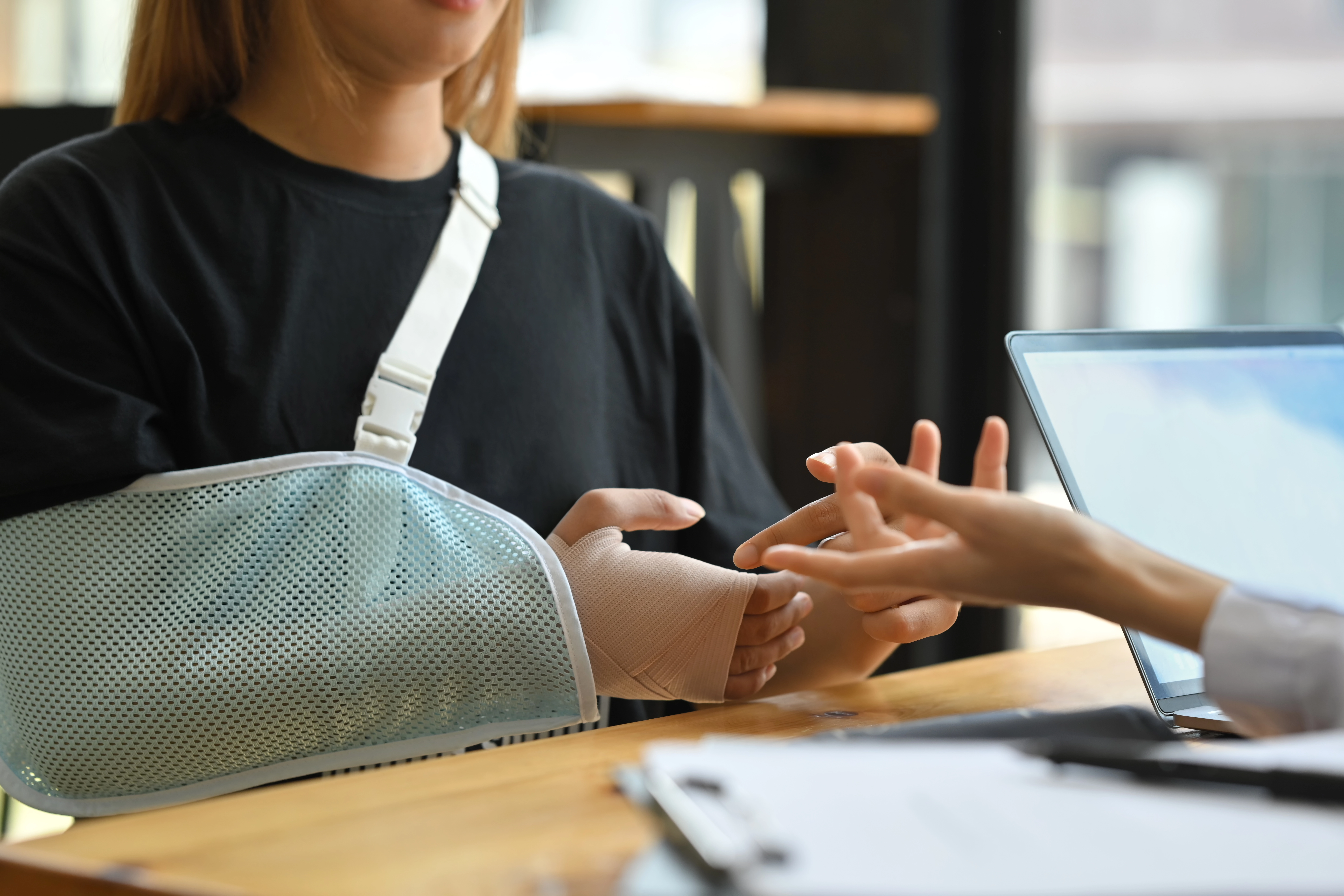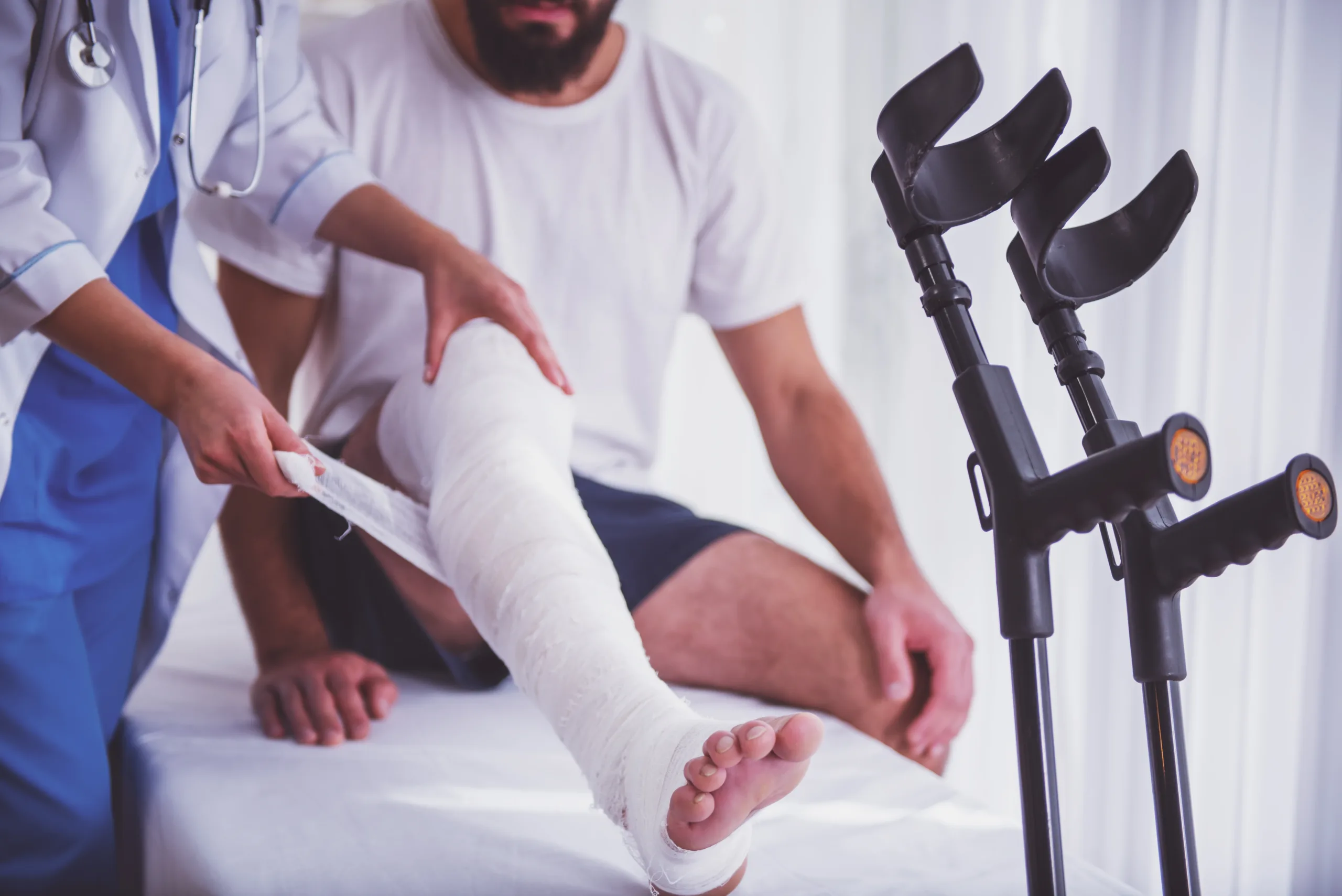The sound of screeching tires, shattering glass, and crunching metal. Time seems to slow down as you helplessly watch car after car collide on the foggy I-10 bridge. Multi-vehicle pileups near New Orleans aren’t just frightening statistics on the evening news—they’re chaotic, traumatic events that can leave victims with serious injuries, mounting medical bills, and complex legal questions.
If you’ve been caught in one of these harrowing chain-reaction crashes, you’re not alone. Louisiana’s unique weather conditions, busy interstate corridors, and high tourist traffic create perfect conditions for these devastating accidents. But knowing the right steps to take afterward can make all the difference in your physical recovery and financial protection.
Why Multi-Vehicle Pile-ups Are Common Near New Orleans
The Greater New Orleans area presents several factors that contribute to multi-vehicle accidents:
- Weather challenges unique to Louisiana: Sudden tropical downpours, dense fog over Lake Pontchartrain, and blinding sun glare create hazardous driving conditions with little warning.
- Heavily trafficked corridors: The I-10 corridor through New Orleans, the Lake Pontchartrain Causeway, and I-610 all carry heavy commuter and commercial traffic, often at high speeds.
- Bridge and elevated roadway hazards: The Greater New Orleans area has numerous bridges and elevated roadways where weather conditions can change dramatically and escape routes are limited.
- Tourism and unfamiliar drivers: With millions of visitors annually, many drivers on New Orleans roads are unfamiliar with local traffic patterns and roadways.
According to Louisiana Department of Transportation data, multi-vehicle collisions involving three or more vehicles account for approximately 15% of all crashes resulting in serious injuries in the New Orleans area.
What Should I Do Immediately After Being Involved in a Pile-up?
The moments following a multi-vehicle crash are critical both for safety and for protecting your legal rights. Here’s what to do if you find yourself involved in a pile-up near New Orleans:
1. Prioritize Safety First
- Assess your situation: If possible, determine whether it’s safer to remain in your vehicle or evacuate. On busy highways like I-10, exiting your vehicle can be dangerous, but staying in a car at risk of fire or additional impacts poses its own hazards.
- Turn on hazard lights: Alert other drivers to the danger ahead.
- If you must exit your vehicle: Move well away from the roadway, ideally behind guardrails or barriers. Louisiana law actually requires you to move your vehicle from the roadway when possible after an accident (Louisiana Revised Statute 32:141).
- Call 911 immediately: Request police and emergency medical services. In Orleans Parish and surrounding areas, response times vary based on location and time of day.
2. Seek Medical Attention
Even if you feel fine initially, many serious injuries don’t show symptoms immediately. The adrenaline from the crash can mask pain and other symptoms.
- Accept on-scene medical evaluation: Allow EMTs to check you at the scene.
- Visit an emergency room or urgent care: If you weren’t transported by ambulance, still seek medical attention within 24 hours.
- Document all medical visits: Keep records of all medical care related to the accident, including follow-up appointments.
New Orleans has several trauma centers equipped to handle accident victims, including University Medical Center New Orleans and Ochsner Medical Center.
3. Document the Scene (If It’s Safe to Do So)
- Take photos: Capture images of all vehicles involved, the overall accident scene, road conditions, weather conditions, and any visible injuries.
- Note the time and weather: Write down or record the exact time, lighting conditions, and weather at the time of the crash.
- Identify witnesses: Get contact information from any witnesses before they leave the scene.
- Record vehicle information: Get license plate numbers, make and model information, and insurance details from all drivers involved.
4. File a Police Report
Louisiana law requires you to report any accident involving injury, death, or property damage exceeding $500 (Louisiana Revised Statute 32:398). In a multi-vehicle pile-up, police response is virtually guaranteed, but ensure that:
- Your statement is included in the report
- You get the names and badge numbers of responding officers
- You request a copy of the accident report or information on how to obtain it later
The report number will be essential for insurance claims and any potential legal action. In New Orleans, you can typically obtain a copy of your accident report from the New Orleans Police Department or Louisiana State Police, depending on which agency responded.
How Is Fault Determined in Louisiana Multi-Vehicle Crashes?
Louisiana follows a “comparative fault” system under Louisiana Civil Code Article 2323. This means:
- Each driver involved can be assigned a percentage of fault
- Your compensation may be reduced by your percentage of fault
- You can still recover damages even if you were partially at fault
- In multi-vehicle pile-ups, several drivers may share percentages of fault
For example, if you suffered $100,000 in damages but were found 20% responsible for the accident, your recovery would be limited to $80,000.
Chain-reaction crashes often involve complex liability determinations. Typically, investigators will look at:
- Which vehicle initiated the first collision
- Whether following vehicles maintained proper distances
- If any drivers were speeding, distracted, or impaired
- Road and weather conditions that may have contributed
- Vehicle maintenance issues (such as bad brakes or tires)
Louisiana’s pure comparative fault system means every party’s actions will be scrutinized to determine their contribution to the accident.
Gathering Evidence to Support Your Claim
The chaotic nature of multi-vehicle accidents makes evidence gathering particularly important:
Physical Evidence
- Vehicle damage patterns: The location and severity of damage can help reconstruct the sequence of impacts.
- Skid marks and road evidence: These can reveal braking attempts and vehicle trajectories.
- Video footage: Traffic cameras on major New Orleans highways, nearby business surveillance, and dashcams may have captured the accident.
Documentation
- Police report: The official police report provides an objective account of the scene.
- Witness statements: Independent witnesses can provide crucial perspectives on how the pile-up occurred.
- Medical records: These establish a direct link between the accident and your injuries.
- Detailed analysis: Accident reconstructionists may be needed for complex multi-vehicle scenarios.
Dealing with Multiple Insurance Companies
One of the most challenging aspects of a multi-vehicle pile-up is handling claims involving numerous insurance companies. Here’s how to approach this:
Understanding Louisiana Insurance Requirements
Louisiana requires minimum liability coverage of:
- $15,000 for bodily injury to one person
- $30,000 for bodily injury to multiple people
- $25,000 for property damage
These minimums are often insufficient for serious multi-vehicle accidents. This is why:
- Uninsured/underinsured motorist coverage is valuable (though not required in Louisiana)
- Medical payments coverage can help with immediate medical costs regardless of fault
Steps for Handling Insurance Claims
- Notify your insurance company promptly: Report the accident to your insurer as soon as possible, but stick to the facts.
- Keep communication organized: When multiple insurers are involved, document all conversations, including the name of representatives, dates, and what was discussed.
- Be cautious with recorded statements: Insurance adjusters may request recorded statements. Consider consulting with an attorney before providing these.
- Don’t accept early settlement offers: Initial offers rarely account for the full extent of damages, especially when injuries may require ongoing treatment.
- Consider the source of compensation: In multi-vehicle accidents, you may have claims against several drivers’ policies.
When Should I Consult a Personal Injury Attorney?
Multi-vehicle pile-ups typically warrant legal consultation because:
- Liability is complex and often disputed
- Multiple insurance policies and coverage limits are involved
- Serious injuries may exceed available insurance coverage
- Evidence may disappear quickly without proper preservation
Additionally, Louisiana has a one-year statute of limitations for personal injury claims (Louisiana Civil Code Article 3492), giving victims a relatively short window to take legal action compared to most other states.
An attorney can help by:
- Conducting a thorough investigation while evidence is fresh
- Identifying all potentially liable parties
- Determining all available insurance coverage
- Calculating the full extent of your damages
- Handling communication with multiple insurance companies
- Ensuring compliance with Louisiana’s strict legal deadlines
How Damages Are Calculated in Louisiana Pile-up Cases
In Louisiana, accident victims may be entitled to several types of damages:
Economic Damages
- Medical expenses (past and future)
- Lost wages and loss of earning capacity
- Property damage
- Out-of-pocket expenses related to the accident
Non-Economic Damages
- Pain and suffering
- Mental anguish
- Loss of enjoyment of life
- Disability and disfigurement
Louisiana doesn’t cap most personal injury damages, though there is a $500,000 cap on medical malpractice cases.
Key Takeaways for Multi-Vehicle Pile-up Victims
- Safety comes first: Prioritize your safety and the safety of others immediately after the crash.
- Document everything: Collect evidence, take photos, gather witness information, and keep detailed records of all accident-related expenses.
- Seek prompt medical attention: Even if injuries seem minor, get medical evaluation as soon as possible.
- Understand Louisiana’s comparative fault system: You may recover damages even if partially at fault, but your compensation will be reduced accordingly.
- Be wary of quick settlement offers: Insurance companies often try to settle quickly before the full extent of injuries is known.
- Know the deadline: Louisiana’s one-year statute of limitations means prompt action is essential.
- Consider legal representation: Multi-vehicle accidents involve complex liability issues that often benefit from professional legal guidance.
Frequently Asked Questions About Multi-Vehicle Pile-ups in Louisiana
Who pays my medical bills while the case is being settled?
Initially, your health insurance or medical payments coverage (if you have it) will cover medical expenses. Louisiana is not a no-fault state, so there’s no automatic payment from auto insurance for medical bills regardless of fault. A personal injury attorney can sometimes help arrange treatment with providers who will wait for payment until your case resolves.
What if the at-fault driver doesn’t have enough insurance to cover all vehicles and injuries?
This is a common problem in multi-vehicle accidents. Options include:
- Your own uninsured/underinsured motorist coverage
- Claims against multiple at-fault drivers
- Identifying other potentially liable parties (vehicle manufacturers, maintenance companies, government entities responsible for road conditions)
How long will it take to resolve a multi-vehicle accident claim in Louisiana?
These complex cases typically take longer to resolve than simple two-car accidents. The timeline depends on:
- The number of vehicles and parties involved
- The severity of injuries and length of medical treatment
- Whether liability is disputed
- Court congestion in the jurisdiction (Orleans Parish courts often have significant backlogs)
Most cases take between several months to two years to resolve.
If I was at the end of a chain-reaction crash, can I still be held liable?
Yes, potentially. Even if you were the last vehicle in a pile-up, you could be assigned partial fault if it’s determined you were following too closely or could have avoided the collision with proper attention. Louisiana’s comparative fault system means each driver’s actions are evaluated individually.
What if I was injured while ridesharing or taking public transportation?
If you were a passenger in an Uber, Lyft, or public transit vehicle involved in a multi-vehicle accident, you generally have strong claims as you likely bear no fault. You may have claims against:
- The driver of your vehicle
- Other involved drivers
- The transportation company
- Your own uninsured motorist coverage
Contact Us for Help After a Multi-Vehicle Accident
Have you or a loved one been injured in a multi-vehicle pile-up near New Orleans? The aftermath can be overwhelming, but you don’t have to face it alone. Our team at E. Orum Young Law has years of experience handling complex multi-vehicle accident cases throughout Louisiana.
We will:
- Thoroughly investigate your accident
- Identify all liable parties
- Calculate the full extent of your damages
- Handle all communication with insurance companies
- Fight for the maximum compensation you deserve
Don’t let Louisiana’s short one-year statute of limitations expire before taking action. Contact our office today for a free case review. We work on a contingency fee basis, meaning you pay nothing unless we recover compensation for you.
Your recovery is our priority. Let us handle the legal complexities while you focus on healing.





